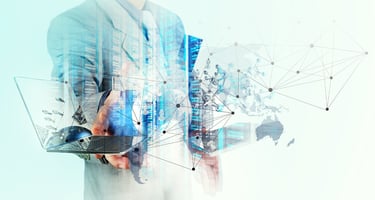Many of us have been paying attention to the news lately. With the election and inauguration in...
Robots Take the Wheel - Self-Driving Cars & Big Data
The age of technological advancements is met with a variety of problems that can be fixed with one solution: self-driving cars. Commercial purchasing of self-driving cars, while commonly viewed as far-off future technology, is just over the horizon. Companies like Tesla, Mercedes Benz, and even Amazon are investing numerous resources into making self-driving cars a reality. Think about calling an Uber and having the driverless car pull up in a matter of seconds, or never having to wait at a stop light again, or having delivery trucks going house-to-house at all hours of night. Our world has many challenges that can be solved if and when self-driving cars become the norm, but with this evolution of technology comes its own set of issues. Concerns of security (such as protecting the penetration vulnerabilities of self-driving cars), analysis of big data, and how we standardize the cars software are just three of the issues experts are discussing.
Ever had a package delivered late and wound up super annoyed or frustrated? UPS recognized this issue and now, they’re using high-tech software to try to combat it. Enter ORION; an algorithm that gives UPS delivery drivers the ability to map the most efficient route to their destination by limiting the amount of left turns. The algorithm proved that waiting for a left turn wastes time. Not wasting time means more deliveries in the day. The same concept can be applied to traffic patterns and how self-driving cars can limit, or entirely discard, the need for cars to come to a complete stop. The solution is software that will allow every car to operate and communicate with one another in conjunction.
If you’re human, you’ve sat in traffic at some point or another. The cause of traffic is typically human error. At a stop, when the front car begins to go, a chain effect begins where each car behind the first has a delayed start; this causes traffic. With self-driving cars, this delay would not exist. Every car would begin moving at the exact same moment because they would have one “hive” mind. However, this will only be achieved through large scale data analytics happening within the blink of an eye. Luckily for us, the age of big data computational software is hitting its stride in full.
https://www.youtube.com/watch?v=iHzzSao6ypE
Big data is taking over the world; companies like Google, Splunk, IBM, Red Hat, Cisco, VMware, Tableau, and countless others are at the forefront of this technological venture. These same companies will be the ones that provide the backend foundation by which driverless cars will operate upon. Technologies such as LIDAR (Light Imaging, Detection, And Radar) will give self-driving cars their ‘eyes’ so-to-speak. LIDAR will allow self-driving cars to map the environment around them in a fraction of a second; massive amounts of data will need to be interpreted at the same time to allow these cars to process, analyze, and make a decision through technologies similar to Splunk. Bring in the hundreds of cars around you and every car will have to communicate the same information to all cars within the same vicinity. It is going to be a huge leap in big data analytics, but with this solution will come more problems.
At some point, a self-driving car will need to make the decision to run the car off the road, with a passenger inside, or hit a bystander on the side of the road. Who would be at fault? The manufacturer for creating the machine, the passenger for not taking control, neither, or both? Considerations like this must be taken into count before the wide-spread use of self-driving technology. Already there have been members of Tesla’s self-driving BETA program who have been in fatal accidents, but they signed a waver stating that they understand the risk being taken and they should be at the ready to take the wheel at a moments notice. Despite being a risk, self-driving cars are shown to reduce the overall rate of accidents by up to 90%.
Not a single person would ever have to drive while intoxicated ever again. People without drivers licenses would be able to take a car without fear. The implications would be endless and it will all be thanks to technology developed by the Splunks, Googles, and Tableaus of the world. Imagine how differently society would operate with no stops, no traffic jams, sleeping on your way to work, or taking phone calls while ‘driving’. This technology is near; self-driving cars will change the world as we know it.


